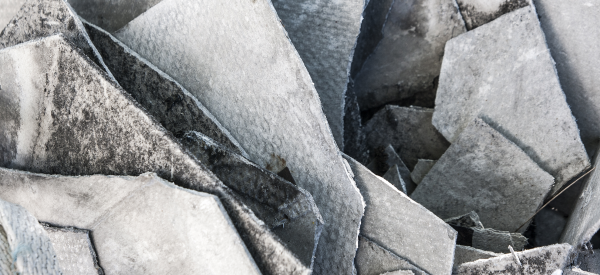
About Lung Health Monitoring Programs
Lung health monitoring programs allow employers to reduce harm to their workers by promoting early identification of potential health concerns, and establishing intervention methods when needed. In many jurisdictions, lung health monitoring includes:
- spirometry (otherwise known as pulmonary function testing),
- chest x-rays,
- questionnaires regarding a worker’s health and occupational exposure history, and
- physician interpretation.
Employers that implement pre-employment lung health monitoring programs are able to record baseline values of workers to identify potential pre-existing conditions that may pose a concern for the worker to perform their duties. This allows the employer to minimize the risk of an incident occurring with that worker through work modifications – when possible – to accommodate for the worker’s lung function limitations. Periodic testing can be compared against the worker’s baseline to determine whether any changes to the worker’s lung health has taken place.

Looking for testing in the U.S?
SureHire USA can service your needs. Contact us today!
Why do lung health monitoring?
The most common airborne hazards that employers must monitor for (based on occupational health and safety laws) include:
- Asbestos
- Coal Dust
- Silica

Asbestos
Asbestos refers to 6 naturally occurring fibrous minerals that have the ability to resist heat, fire, and electricity. Although asbestos fibres are microscopic, they are extremely durable and resistant to fire and most chemical reactions and breakdowns. These properties of asbestos supported its use for many years in a number of different commercial and industrial settings, as well as in a wide range of consumer products.
When materials that contain asbestos are disturbed or damaged, fibres are released into the air. When these fibres are inhaled, they can cause serious lung conditions that often take a long time to develop but, once diagnosed, can be deadly. Early detection is crucial for mitigating the risk of damage to the lung health of your workers, which can affect their overall quality of life.
Coal Dust
Coal dust is a mixture that contains more than 50 substances produced during the mining and handling of coal. Coal is a combustible material made from decayed plant matter that has been compressed by rock formations over a long period of time and is the most abundant of the fossil fuels. Rank relates to the geological age of the coal. The major types of coals, in order of the lowest to the highest rank, are: (1) Lignite, (2) Sub-Bituminous, (3) Bituminous (most common), and (4) Anthtacite.
The most commonly found minerals in coal dust include kaolinite, illite, calcite, pyrite, and quartz (silica). Exposure to coal dust can result in a serious disease commonly known as “Black Lung”. Black Lung includes Coal Workers Pneumoconiosis (CWP), bronchitis, emphysema, and silicosis as a result of working in coal mines.


Silica
Silica has been linked to respiratory cancers in humans as well as silicosis, chronic obstructive pulmonary disease (COPD), emphysema, and pulmonary tuberculosis. Hazardous exposure in the workplace can occur when silica found in sand, quartz, and granite becomes airborne as dust. Silica becomes airborne as dust from activities such as:
- Demolition of brick, concrete or masonry;
- Chipping, hammering, grinding, sawing, and drilling in concrete, brick or rock;
- Abrasive blasting using sand or from material being blasted such as concrete;
- Trenching or excavating
- Proppant for hydraulic fracturing
SureHire’s Lunch Health Monitoring Program ensures 100% compliance with Occupational Health & Safety (OHS) standards in Alberta. Click here to learn more.
Understanding Lung Health Testing Results
Lung health monitoring programs may identify existing respiratory conditions or the development of new conditions. Some results may require the employer to remove the worker from their job to eliminate further exposure and prevent further damage from occurring. A physician’s interpretation of the testing helps determine what steps, if any, should be taken on a case-by-case basis.

Checking Results
Checking your employees’ test results is easy with SureHire’s exclusive client portal, SureLink. SureLink is a secured online database that not only allows you to view test results but also allows you to book appointments, view snapshot reports on your dashboard, check the completion status of your appointments, receive alerts and updates from SureHire, and more! Once your employees have finished testing, our team of experts is here to help you determine what the results mean for your company and your employee(s).
FAQs
Where can I get info on the Canada Labour Code Coal Mining Occupational Health and Safety Regulations?
Information on the Canada Labour Code Coal Mining Occupational Health and Safety Regulations can be found here.
Where is asbestos found?
Asbestos can be found in any industrial or residential building built or refurbished before the year 2000. It is in many of the common materials used in the building trade. It can be found in any of the following places:
- Attic and wall insulation containing vermiculite
- Vinyl floor tiles and the backing on vinyl sheet flooring and adhesives
- Roofing and siding shingles
- Textured paint and patching compounds used on wall and ceilings
- Walls and floors around wood-burning stoves protected with asbestos paper, millboard, or cement sheets
- Hot water and steam pipes coated with asbestos material or covered with an asbestos blanket or tape
- Oil and coal furnaces and door gaskets with asbestos insulation
- Heat-resistant fabrics
- Automobile clutches and brakes
Why is asbestos harmful?
When materials that contain asbestos are disturbed or damaged, fibres are released into the air. When these fibres are inhaled they can cause serious lung conditions that often take a long time to develop but, once diagnosed, can be deadly. Asbestos can cause the following conditions:
- Mesothelioma
- Asbestos-related lung cancer
- Asbestosis
- Pleural thickening
It is also important to remember that people who smoke and are also exposed to asbestos fibres are at a much greater risk of developing lung cancer.
How can I protect myself from exposure?
You can protect yourself by ensuring that you receive the proper training. In many provinces, each worker must undergo a certificate course through an accredited agency. Each worker must also ensure that they are wearing the proper personal protective equipment (PPE) including respiratory protective equipment appropriate for asbestos exposure. Talk to your employer if you have any questions or concerns.
Where can I find more information on asbestos regulatory requirements?
Provincial or state government websites will often have links and resources related to OHS regulations which can be reviewed and/or downloaded, such as WorkSafe BC and the Government of Alberta Website.
What are the health risks associated with coal dust exposure?
Exposure to coal dust can occur during the mining and handling of coal during cleaning, blending processes, or in bulk handling and can result in a serious disease commonly known as “black lung”. This disease was first recognized as a disease of British coal miners in the mid-17th century. Black lung includes CWP, bronchitis, emphysema, and silicosis in association with a history of employment in coal mines.
What is Coal Worker’s Pneumoconiosis (CWP)?
CWP is the inflammation and scarring of the lungs caused by exposure to coal dust. Diagnosis of CWP is usually based on x-ray results. There are two types of CWP: simple and complicated. Simple CWP often has no symptoms. Coughing and a shortness of breath that worsens as the disease progresses are symptoms that may be present in the later stages of the disease. Complicated CWP is also called Progressive Massive Fibrosis (PMF) and is associated with significant decreases in lung function and oxygen diffusing capacity.
What factors can contribute to the development of CWP?
Not all workers who are exposed to coal dust will develop CWP. Factors that may affect someone’s likelihood of developing the condition include differences in the effectiveness of lung clearance mechanisms, differences in the auto-immune reaction in the lung tissue, possible genetic susceptibility, and smoking.
What is the treatment for CWP?
There is no effective treatment for CWP apart from eliminating further exposure.
Are there occupational health and safety regulations with respect to coal dust?
Yes. There are regulations under the Canadian Labour Code and some provinces have additional regulations that pertain to required medical monitoring for any workers exposed to coal dust. Additionally, regulations in the United States can be found on the US Department of Labor website via the Mine Safety and Health Administration (MSHA) or on the Centers for Disease Control and Prevention via the National Institute for Occupational Safety and Health (NIOSH).
Where is silica found?
Silica is present in about 95% of rocks, clays, sands and soils. Hazardous exposure can occur when crystalline silica found in sand, quartz, and granite becomes airborne as dust from certain activities.
What activities create crystalline silica?
- Crystalline silica becomes airborne as dust from activities such as:
- Demolition of brick, concrete, or masonry
- Chipping, hammering, grinding, sawing, and drilling in concrete, brick, or rock
- Abrasive blasting using sand or from material being blasted such as concrete
- Crushing, loading, and hauling of concrete or rock
- Dry sweeping concrete, sand, or rock dust
- Trenching or excavating
- Proppant for hydraulic fracturing
What is silicosis?
Silicosis is caused when crystalline silica particles less than 10 microns in diameter are inhaled and deposited into the lungs. Lung tissue reacts by developing lumps and scarring around trapped silica particles. If lumps and scar tissue become too large, breathing becomes difficult, the results of which could be fatal.
What factors influence the development of silicosis?
The following factors can have an impact on the development of silicosis:
- Particle type (quartz, sand, granite, etc.)
- Particle size
- How long a person has been exposed
- The concentration of silica dust in the air
- Individual susceptibility
